Grow Room Layout
The Perfect Grow Light Layout
An investment in a LED grow light is the burning question. It is typically more expensive than its incandescent brothers and while it has a great backstory on cooler running temperatures, efficacy and a robustness for long life, the tech loop of is there a better light next week often locks on the safety. The metric that counts of course is the biomass per watt or cost of energy per unit of biomass gained. So if I have 400-600 watts of expended led light what can I expect in comparison to HPS etc. This is the typical ratio of energy saving that LEDS offer dependent on the selection of products with min 2 Joules/W. If your at this place in your decision process, maybe your prepared to travel a little further with me.
If I buy 400 watts of Led how do I optimise that investment. For small grow areas, common practice is to just hang the 400 watts. With ready built fixtures your at the mercy of the manufacturers design which will vary in its ability to distribute light over your canopy. In almost all cases this will provide a hot centre with diminishing light as you move out of the centre. The ability to control that will rely on smaller fittings that you can spread out to mitigate the diminishing edge light, this applies to ready made or DIY builds, logical so far. But where do I place the lights, I dont want to spend hours tweaking light placement to get what I think is uniform coverage and if that is your approach you will need at least a LUX meter but preferably a spectrometer that can measure photons(ppfd) There is a lot of youtube video and resources showing these products at work. There is one problem however with this approach, these products require you to move the meters over your area to read the numbers in a given location, in short they measure on a single plane and dont take into consideration the angular distribution of the light source. The polar distribution curve of a grow light can provide an indication of the type of distribution expected from the light.

What you need is an IES file from the manufacturer, Data file created in the standardized IES (Illuminating Engineering Society) photometric format; contains measurements of light and light quantities.These files can be used in a simulation program that allows you to move fixtures around your room and calculate the absolute ppfd for a given area before you ever need to turn a screw. Lets look at an example
Utilising our 3 Channel Solskin boards(1ft square or 300mm x 300mm), the symmetrical board design allows for even light distribution from 4 sides. After generation of an ies file we are able to simulate from the board’s optical data, almost any layout variation we would like. In this case we are looking at a common area, the 4ft by 4ft space. Given the nature of the square layout it makes sense to create a square light in order to gain maximum coverage.
Specifications:
680 Watts(170 watts per board)
3 channels used, 3k/4k and 660nm
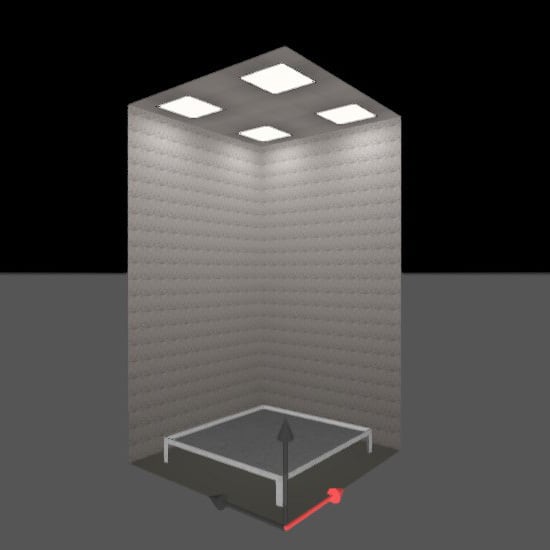
Based on several simulations it became clear that the Solskins, on a 1ft(300mm) gap and optimum height to canopy of 18 inches provided the best overall PPFD across the 16SqFt.
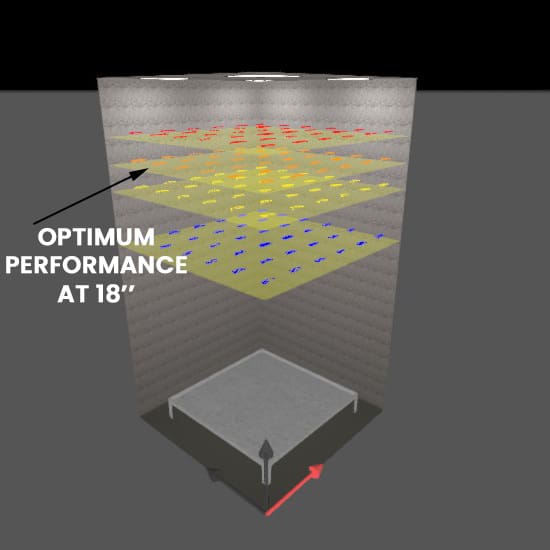
| Surface | Result | Average (Target) | Min | Max | Min/average | Min/max |
| 18inch | Perpendicular illuminance (adaptive) [ppfd] | 827 | 647 | 947 | 0.78 | 0.68 |
| 24inch | Perpendicular illuminance (adaptive) [ppfd] | 750 | 608 | 810 | 0.81 | 0.75 |
| 12inch | Perpendicular illuminance (adaptive) [ppfd] | 923 | 653 | 1301 | 0.71 | 0.5 |
| 36inch | Perpendicular illuminance (adaptive) [ppfd] | 618 | 519 | 670 | 0.84 | 0.77 |
Summary
The 18” height is a balance of photon density and even coverage. Coverage improves at greater height as seen in lower PPFD differential but would require greater power to push into the +800 PPFD zone. At 12 inches the performance was excellent but lacked the balance across the canopy.









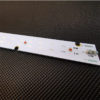

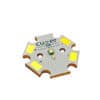
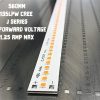
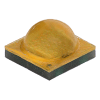



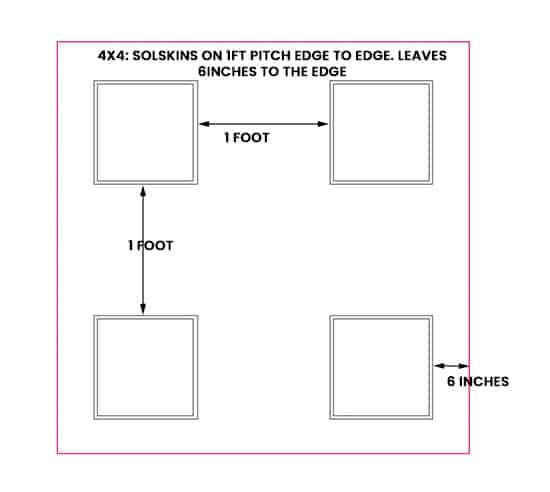
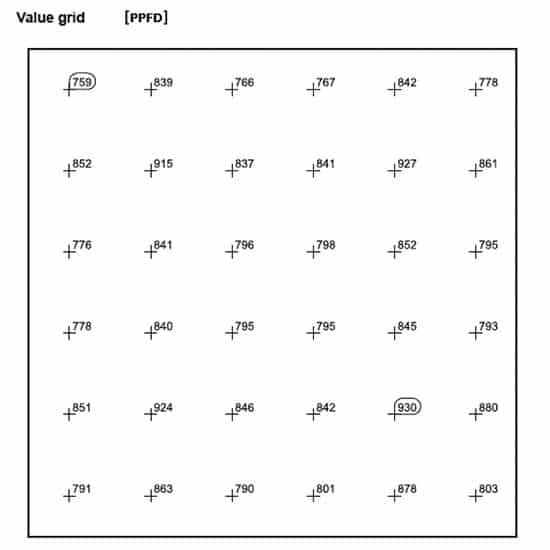
why not pushing those baby , your led pcb is amazing! nichia’s can handle 1w each, and they seems at realllly low wattage on your configuration?
It’s a fair comment. Mostly we present conservative numbers but the boards can take more current but the penalty will be efficacy